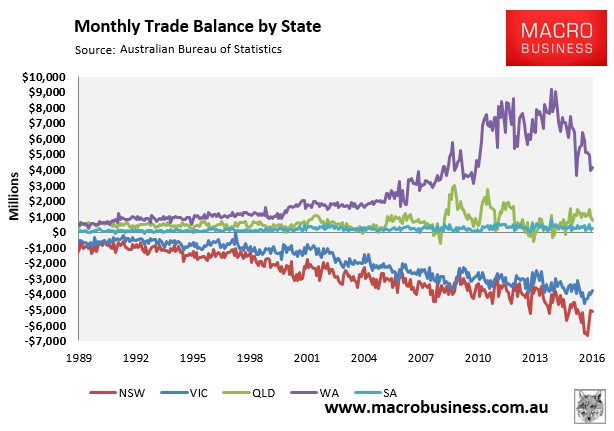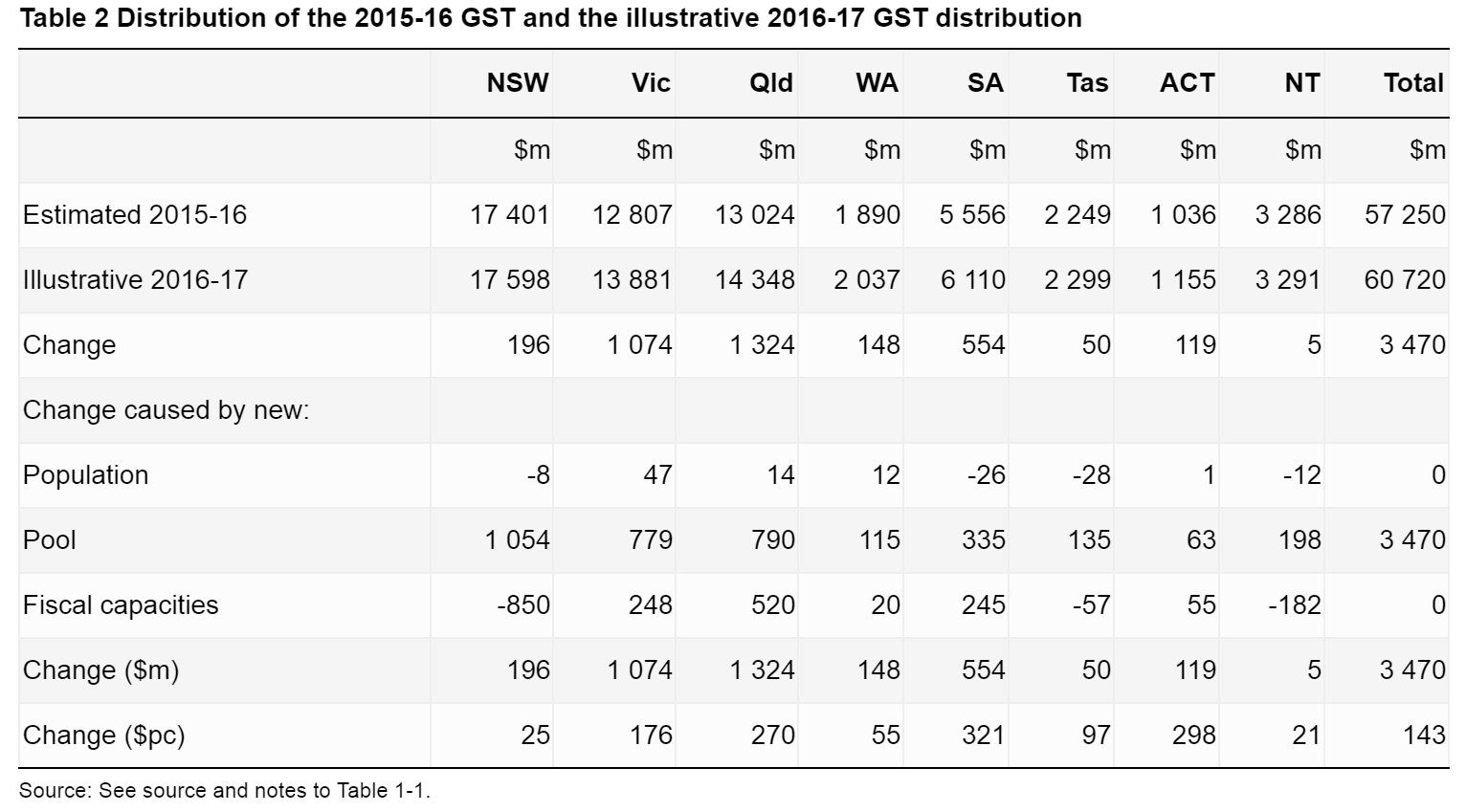From the ABC:
A furious Western Australian Treasurer Mike Nahan says the state has been fleeced by the Commonwealth Grants Commission, which has recommended an increase of just $148 million in GST revenue.
The commission has recommended WA’s share of national GST revenue increase from 3.3 per cent to 3.4 per cent in 2016-17.
But Dr Nahan said WA had been propping up the national economy for years and deserved a far greater share of the GST now that iron ore prices had halved.
“Western Australia has had an unprecedented drop in revenue both from iron ore royalties, oil and gas royalties and taxes across the board – the largest drop any state has received since the Great Depression and yet the GST share continues to decline,” he told the ABC.
“There is something fundamentally wrong with the system, the Commonwealth Grants Commission is oblivious to it and refuses to address it, and it’s just unacceptable and is bringing into question the strength of the federation.”
He said the state’s economic woes could be fixed if the GST carve-up was fair.
“I’m the Treasurer of Western Australia and I’m facing a multi-billion-dollar deficit because the state is being fleeced to the tune of $4 billion,” Dr Nahan said.
“If I had my fair share of GST, we would be in large surplus.
“As a result we’re borrowing money to send to South Australia, Victoria, New South Wales, ACT for them to spend on government services and we’re in a deficit – this is outrageous.
“You cannot continue to fleece the state like this.”
The state of WA has my utmost sympathies here. As we know, it is Australia’s only real earner and the eastern states are downright parasitic in economic terms:

But that does not mean that the GST Grants Commission should suddenly shift its formula for horizontal fiscal equalisation to bail out a hapless government. Here is what the Commission says was changed this time around:
This report recommends a distribution of GST revenue among the States in 2016-17 designed to give each of them the same capacity to deliver services, acquire infrastructure and hold financial assets.
The GST distribution is based on the same methods applied in the 2015 Methodology Review, as required by our terms of reference. It also incorporates 2014-15 data for the first time.
In the 2015 Review we committed to a deferred but comprehensive review of the wage costs assessment, which we have now completed. We consider, based upon the evidence before us, that there continues to be a conceptual case for differences in the wages States would pay for comparable employees. We have decided to retain the 2015 Review method of estimating these differences using Survey of Education and Training (SET) data for 2012-13 and 2013-14 and more recently available data from the ABS Characteristics of Employment survey (CoES) for 2014-15.
The States’ assessed fiscal capacities continue to reflect trends in their economies and other key influences on their circumstances. The assessed fiscal capacities of New South Wales, Tasmania and the Northern Territory have improved, reducing those States’ GST shares. New South Wales’ stronger fiscal capacity was driven by an increased revenue capacity, principally because of its strong property market. The stronger fiscal capacity of Tasmania and the Northern Territory was driven by a fall in their costs of providing services. For Tasmania, this was due to a fall in its relative wage costs. For the Northern Territory, it was due to a fall in its relative population growth, which reduced its need to invest in new infrastructure.
The assessed fiscal capacities of Victoria, Queensland, South Australia and the ACT have fallen, increasing those States’ GST shares. For Queensland, historically high natural disaster expenses continue to affect the State as does its reduced capacity to raise coal royalties. Below average growth in a number of major revenue bases have reduced the ACT’s revenue raising capacity. For South Australia, a sharp decline in its share of Commonwealth payments for specific purposes (PSPs) was the main influence acting to increase its GST share. Victoria’s increased GST share was largely due to an increase in its share of national population growth, which increased its need to invest in new infrastructure.
Western Australia’s share of GST revenue has increased marginally from 3.3% to 3.4%. While falls in commodity prices, particularly for iron ore, have reduced its capacity to raise mining royalties and increased its GST share, this has been more than offset by a fall in its share of national population growth, reducing its need to invest in new infrastructure.
A whole range of factors determine the outcome:

The Barnett Government knew that the Grants Commission is a slow moving beast with major reviews only every five years so it can’t complain now about GST distributions when it was its own ridiculous wider Budget forecasts that killed its fiscal capacity in the first place. Indeed, that same slow moving beast has ensured that WA received nice windfall gains from the GST versus baseline over the duration of the boom.
Naked Emperor Barnett and his catamites engaged in a fiscal Bacchanal more sordid than anything Australia has witnessed since the Victorian Labor Kerner regime of the 1990s and the people of WA should do precisely what their eastern cousins did and pour their fiscal pain straight into the ballot box.

